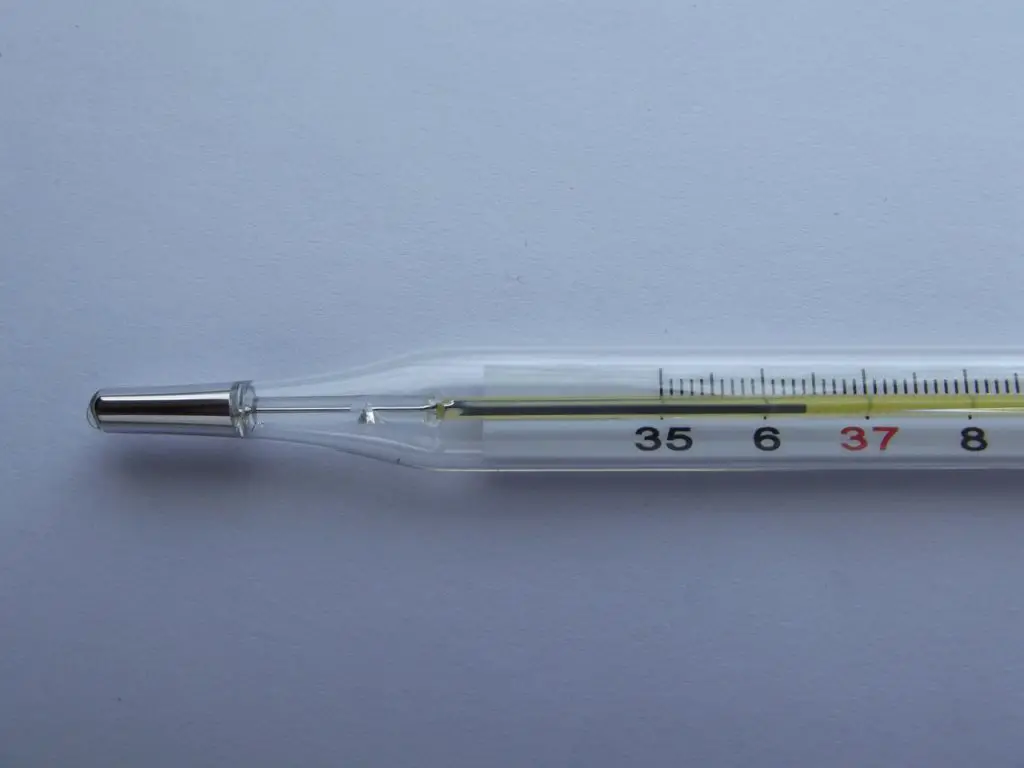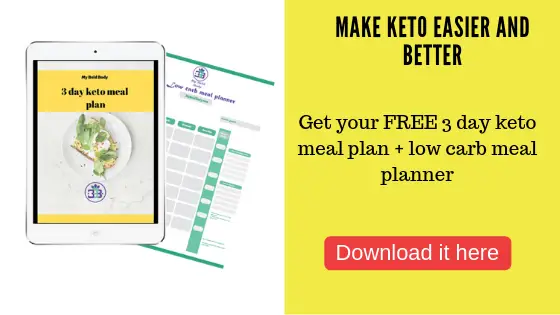This post may contain affiliate links. For more info, please read our full disclosure here
The ketogenic diet seems to be a really promising diet, but when going keto for the first time, it might not feel so good for the first couple of days.
A reasonable percentage of newbies report experiencing certain flu-like symptoms when first going keto. This is called the keto flu and happens when your body is trying to switch from burning glucose as its primary energy source to burning ketones.
These flu symptoms go away once your body becomes fat adapted and can now utilize ketones for fuel.
This guide explains what the keto diet flu is, why it happens, what to expect and what you can do to beat the keto flu and get rid of it.
What is the keto flu?

The keto flu is a bunch of flu-like symptoms that occur when going keto particularly for the first time. It has nothing to do with the influenza viruses that cause the normal flu, just that the symptoms tend to resemble that of the normal flu. Hence, the name.
It occurs when your body is trying to adapt to the ketogenic way of eating. The keto diet is a low carb, high fat diet, meaning fats become your primary source of fuel for the body. On your regular high carb diet, carbohydrates are your primary source of energy.
On the high carb diet you burn glucose for fuel while on the keto diet, you burn ketones for fuel. The change however from burning glucose to burning ketones might not be an easy switch for some people and may trigger certain symptoms.
These symptoms are only temporary and they go away once you become fat adapted and then you can start enjoying the benefits of ketogenic living in full.
When does it start and how long does it last?
The flu symptoms usually kick in from around 24 hours to 48 hours after you start following a keto diet and last averagely about a week. Although some may experience it less than that while others may experience it more than that.
It is not the same for everybody but the average is about a week. Not to worry, there are certain things to do to make keto adaptation faster and get rid of the keto flu easier. (More on that later)
But before that, what are the symptoms you should be expecting?
Symptoms of the keto flu

When going keto for the first time, these are the symptoms people report experiencing.
- Headache
- Nausea
- Sugar cravings
- Stomach pain
- Poor focus or mental fog
- Diarrhea
- Constipation
- Vomiting
- Dizziness
- Weakness
- Muscle cramps
Don’t worry about the long list. You are definitely not going to experience all of them or even half. Following your keto adaptation, you are likely to run into only 2 or 3 or maybe 4 of these symptoms.
But a lot of issues affect these flu symptoms and how they affect us.
How the keto diet flu affects us differently
We are all humans (from planet earth) but our bodies are different. The biggest underlying factor behind why the keto flu affects us at different rates and intensities is our metabolic flexibility.
As quoted by the US national library of medicine “metabolic flexibility is the ability to respond or adapt to conditional changes in metabolic demand”.
In simple words, it’s your body’s ability to switch between and utilize other sources of energy. The two biggest sources of fuel for the body are carbs and fat. How quickly you can switch between these two is termed metabolic flexibility.
If you are more metabolically flexible, you are most likely to experience mild keto flu symptoms and for a shorter period too. Or, you might not even experience it at all. But if you are more metabolically rigid, then you are more likely to experience more severe symptoms and for longer too.
But don’t worry, no matter how metabolically rigid you are, this guide will help you deal with and get rid of the keto flu as if you were a metabolic rubber band.
But before we jump into how do beat the keto flu, it’s important to understand what happens to the body and how these changes affect the symptoms we experience. That is the first step in dealing with the keto flu
What happens to your body?

When you first go keto, certain changes happen within your body to prepare itself for fat burning. How some these changes occur however, may result in some keto flu symptoms for some people.
Here are some of the things that happen to your body when you first go keto.
Glycogen is used up
When you eat carbohydrates, they are converted to glucose for energy. The body stores excess glucose as glycogen in the liver. When first transitioning into ketosis, when your carbohydrate intake becomes low, your body moves to use up glycogen in the liver.
This is the first step your body makes when carbohydrate intake is low, before turning to fats for fuel. The glycogen depletion occurs along with other things. One of them is water and electrolyte loss
Water is lost
Water as well as electrolytes are lost when first going keto. One of the reasons is because glycogen as seen above holds on to a lot of water when being stored. Every gram of glycogen holds on to about 3 grams of water.
In addition to that, your kidney also releases water it’s holding on to. This large loss of water causes a drop in water weight which is usually one of the first signs when going keto.
This huge loss of water is also going to leave you really dehydrated and feeling a little lightheaded, so it’s important to drink lots of water.
Electrolytes are lost
Electrolytes are certain important mineral nutrients that aid in various bodily processes. They are important to the proper functioning of our muscles and nervous system. The main electrolytes that affect the body are sodium, potassium, calcium and magnesium.
When carbohydrate intake is reduced, the insulin levels drop and the kidney releases excess sodium it was holding on to. When electrolytes are too little or too much, there is said to be an electrolyte imbalance.
An imbalance in electrolyte levels can leave you with a headache, or feeling tired or constipated among other things. So it’s important to replenish your electrolytes, which is pretty easy and is discussed later in this guide.
Some hormone levels change
When you start the ketogenic diet, certain hormone changes are likely to occur. One of the reasons why this happens is due to the carbohydrate withdrawal.
Studies have shown that sugar has an effect on our brain similar to what we get from substances like cocaine thanks to a hormone called dopamine. That is why sugar has been reported to be even more addictive than cocaine.
Withdrawal from carbs definitely affects this hormone levels and can leave you feeling tired and craving sugar. Hopefully once you are keto adapted, you’ll be free from the pangs of such addictions.
Stress hormones may also be affected during the transition period.
Now that you have a good idea of the temporary changes that occur in your body when first going keto, it’s time for the best part; how to beat and get rid of the keto flu
How to beat and get rid of the keto flu

The keto flu might seem like such a dreaded thing, but it’s not as bad as you imagine. And with the proper steps in place, you can effectively beat the keto flu and even possibly prevent it. (Yes. I said it).
So then, what are the steps you can take to get rid of the keto flu?
Drink water
Due to the huge water loss that happens during the transition into ketosis, you are likely to feel dehydrated, lightheaded and may even experience muscle cramps. A simple way to solve this is by drinking water. It’s as simple as that.
Don’t worry about getting frequent trips to the bathroom. The bathroom trips are better than depriving your body of the water it needs which will have adverse effects
You can keep a bottle of water near you for whenever you feel dehydrated. The main point here is to ensure you drink sufficient water to keep you hydrated.
Replace electrolytes
Your body needs electrolytes to function well and an electrolyte imbalance would not be ideal. When you first transition into ketosis, you are going to lose some electrolytes like sodium, magnesium, calcium and potassium.
Sodium for example is released by the kidney in response to reduced insulin levels. Fortunately, replenishing electrolytes is not as hard as it sounds. Potassium is also lost rapidly. Magnesium isn’t lost as much but it does make keto transition easier.
There are 2 ways you can get sufficient electrolytes
- Eat keto friendly foods high in the required electrolytes
- Take electrolyte supplements
- Drink bone broth. Bone broth is said to contain important electrolytes like sodium and potassium
Here is a list of the electrolytes and the keto friendly foods that are rich in them
- Sodium – pink Himalayan salt, bone broth, shellfish
- Magnesium – spinach, avocados, oysters, pumpkin seeds
- Potassium – kale, mushrooms, avocados, spinach
- Calcium – leafy greens, broccoli, fish, almond milk, coconut milk
Getting sufficient electrolytes should solve electrolyte imbalance related issues like brain fog, nausea, cramps and others.
Engage in low intensity exercises
When transitioning, you might not feel so good and exercise might be the very last thing to cross your mind. But exercise can actually help reduce the severity of the keto flu and also help you become fat adapted quicker and easier
Although it’s important to note, I said low intensity exercises. You should best avoid high intensity exercises because they tend to put extra stress on your body which will have an opposite effect and might worsen things
Here are some nice low intensity exercises you can try out
- Going for a walk
- Doing yoga
- Swimming
Low intensity exercises are the best and can help lessen and alleviate the flu symptoms and also help you achieve ketosis quicker.
Eat more healthy fats (including MCTs)
Your body is trying to adapt to burning fats for energy. One of the ways you can help it do that better is by giving it more healthy fats that will encourage it to kick-start fat burning.
Basically, taking more healthy fats like avocados, coconut oil, eggs and ghee signals your body that there is an availability of another fuel source and will encourage fat utilization for energy.
Emphasis was made on healthy fats because not all fats are healthy and unhealthy fats are not the best for your metabolism especially when your body is trying to explore an alternative fuel source for the first time.
Also, MCTs are very helpful too. MCTs stand for medium chain triglycerides. The thing about MCTs is that they go straight to the liver after digestion to be converted into ketones for energy.
They are converted into ketones faster than other fats and can help shorten the keto flu period as well as help your body become fat adapted quicker and easier. Good sources of MCTs include MCT oil, MTC powder and coconut oil.
Minimize stress and get adequate sleep
When going keto for the first time, you might find yourself a little stressed at times. Stress can make achieving ketosis harder, so minimizing stress is very helpful. A good way to deal with stress is by meditating or doing yoga.
Good and quality sleep is also important. You should aim to get at least 7 hours of sleep every day. Sleep goes a long way in reducing stress and putting your body at rest.
Proper stress management and quality sleep puts your body at ease which in turn helps with the flu symptoms
Other Important tips to note when dealing with the keto flu

Here are some very important tips to note that can help you when trying to deal with and get rid of the keto flu
- Watch out for hidden carbs – hidden carbs will add up to your carb count, making your fat adaptation harder and may make the flu last longer than it should
- Track your macros – tracking your macros will help you stay on track. if the keto flu still bothers you after a week, you might want to consider recalculating your macro ratios
- Watch your protein intake – too little protein is bad and too much protein can affect ketosis. It’s important to consume the right amount. Check out our guide to protein on keto
- Focus on real whole foods – when entering ketosis for the first time, focus on eating the best real whole foods. They are more nutritious, healthier and mostly lower in carbs than their processed counterparts.
- Avoid HIIT – it’s best to avoid any high intensity exercises during the period of the keto diet flu. Rather focus on low intensity exercises as stated earlier
- Don’t push yourself – if going all military on carbs all of a sudden isn’t your thing, try gradually reducing your carb intake week by week by cutting out high carb foods. After the first 3 or 4 weeks, you should be close to or already at the keto carb ratio. This step is a smoother, although longer approach to ketosis.
- Don’t quit – I know it may be tempting to opt out. But it won’t help and it’ll only take you back to square 1 without you reaping the benefits of the keto diet. Stay motivated and stay strong. You can do it. You really can.
Summing it all up
The ketogenic diet is a high fat low carb diet that has a couple of promising benefits. However, when starting out on keto for the first time, you may experience something called “the keto flu”.
The keto diet flu is a collection of flu-like symptoms that occur especially when you transition from a high carb way of eating to a low carb ketogenic way of eating. The symptoms only last a few days to a week and varies for different people.
With the right steps as stated earlier, you can get rid of the keto flu and even possibly avoid it in the first place. Basically you’ll need to
- Drink water and stay hydrated
- Replenish electrolytes
- Try out low intensity exercises
- Take more healthy fats and MCTs
- Manage stress and get adequate sleep
- Watch out for hidden carbs
- Stay motivated
With the right steps, the keto diet flu will be a piece of cake to handle. If you loved this guide, feel free to share it with your friends.
Also, make your keto journey easier by checking out both our free keto resources and our keto diet recommendations to help you live a successful keto lifestyle, boldly.
References
- Low carb nutrition and metabolism – AJCN
- Metabolic flexibility in health and disease – NCBI
- Electrolytes: function, imbalance and source – Healthline
- Physiological Effects of Medium-Chain Triglycerides – journal of nutrition
- Short- and medium-chain fatty acids in energy metabolism: the cellular perspective – NCBI
- Fat metabolism in exercise – NCBI
- Fat oxidation rate during and after a low- or high-intensity exercise study – NCBI
